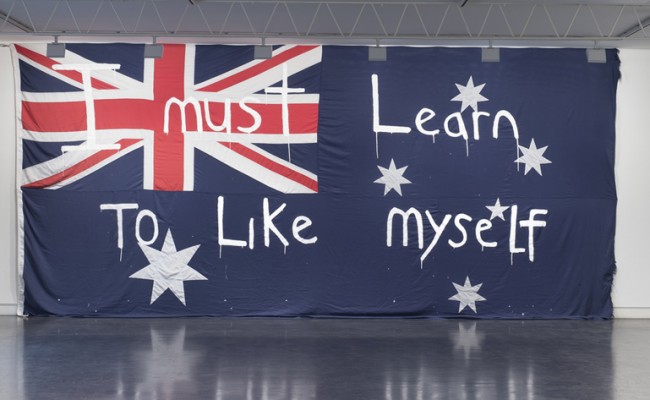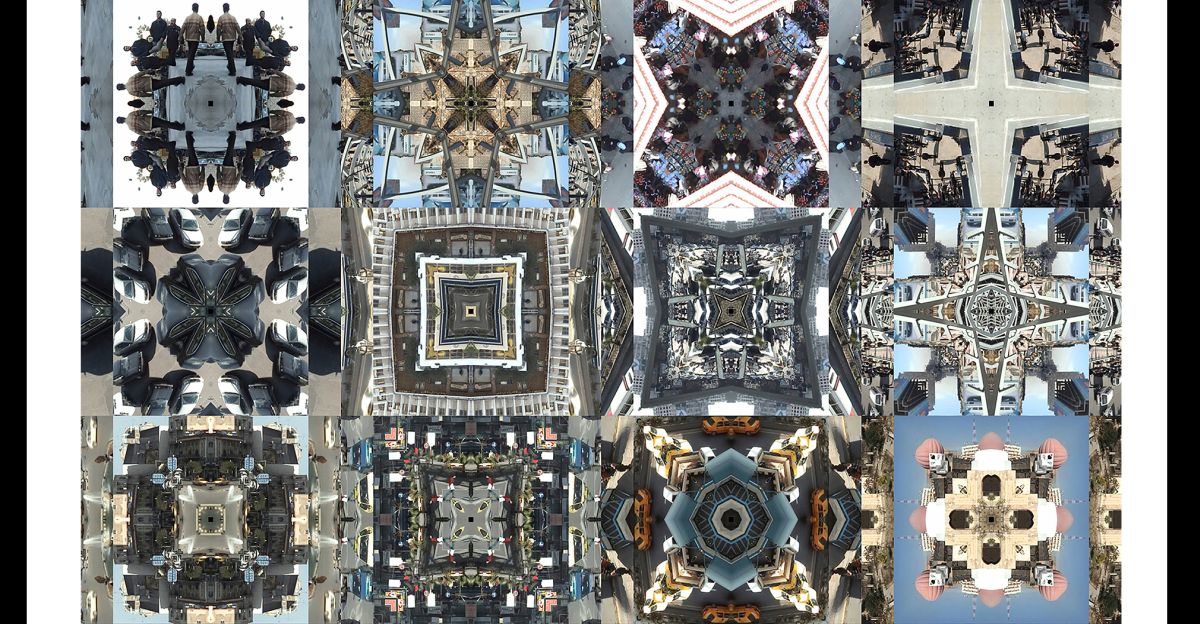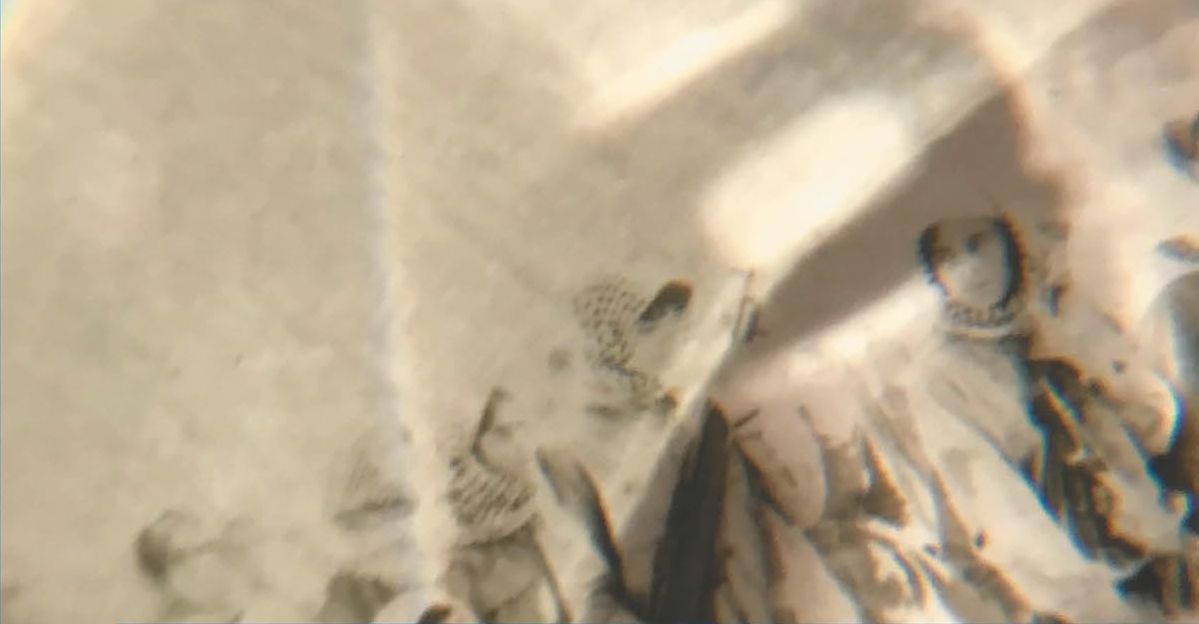In the wake of Invasion Day 2018, two works – Warwick Thornton’s Sweet Country and Richard Lewer’s exhibition The History of Australia – highlight Australia’s desperate and increasing need to confront its foundations. Here are two art projects that swipe and paw at Australia’s historical consciousness and demand that we do better.
Work 1
First released on the eve of Invasion Day, Warwick Thornton’s second feature film tells the story of Hamilton Morris, an Aboriginal man on the run for killing a whitefella in self-defence. Set in the Northern Territory in 1929, the film is remarkable for softly but firmly centering its Aboriginal characters, for retelling a story that is already familiar but which lends a new lens to the telling. It isn’t immediately apparent who the protagonist of this story is – the viewer is introduced to a tirade of characters, black and white, who embody different impacts and features of colonialism.
There’s Sam Kelly and his wife Lizzie, who live with an evangelical preacher, Fred Smith, portraying Christian influence in a relatively positive light. There’s Mick Kennedy, the middling station owner who fathered an Aboriginal son. And Philomac, a nod to the taboo sexual relations between black and white, and the fractured choice Philomac has, being between worlds; he gets a pair of boots from his father, a promotion, but he also throws away the white man’s watch. There’s Archie, Kennedy’s Aboriginal stockman, surviving through compliance (‘Yes, boss,’). Archie was taken from his ancestral lands as a child and laments his disconnect with culture, something he projects on to Philomac. Lizzie suffers and survives sexual assault and unwanted pregnancy. She is a testament to the silencing of women’s voices and experience; something no more apparent than in the courtroom scene, where she is called to testify and covers her face with her hands, shamed by the public display of her own abuse.
Discussing the film with a friend who used to study cinema, he criticised the portrayal of the white characters as too caricatured. I agree they were unremarkable, but interpreted this as a step back to allow the Aboriginal cast to step forward.
The most villainous of the cast, Harry March, who is the most outwardly racist and violent, is a shell-shocked veteran of the First World War, returned deranged and alcoholic to live an isolated existence in the central desert. The renegade cop, Sergeant Fletcher, is hell-bent on catching Kelly and is nothing but an isolated and unchecked insistence on personal power: ‘I am the law,’ he says. The ‘fair go,’ so central to Australian values, is embodied by Judge Taylor, the judicial officer sent up from the city to hear Kelly’s case. He is the colonial insistence on egalitarianism, contrasted with the racially charged thirst for retribution called out from the galley. Taylor will not have his committal hearing heard in the local pub. But the way justice works, then as now, is bittersweet.
Unlike typical outlaw cat-and-mouse games, Kelly knows the game is up. He does not go down in a haze of glory like the outlaw bushrangers we romanticise in our national narratives. One part of the film shows a screening of the silent film, The True History of the Kelly Gang, a tongue-in-cheek reference to Australia’s silence and indifference to the story of Sam Kelly, and to the True History of others like him.
Here, Thornton has crafted a film that stings with the kind of uncomfortable truths creative nonfiction can leak. It’s a story but it’s also true. And it’s recent. It’s living memory recent. It has parallels in the present. In a recent Guardian article, Thornton said: ‘If we want to man up, or stand up as a country and move forward, we need to know about our history. The Film is completely truthful about history, even though it’s fiction. I think Australia is really ready for films like this.’
Still from Sweet Country
Work 2
Australia should also be ready for shows like Richard Lewer’s. Tacking on to the tails of the Change the Date conversation, Richard Lewer uncovered his most recent body of work, The History of Australia, at Hugo Michell Gallery in Adelaide. Lewer is a social realist and his work is a kind of nonfiction narrative. This show differed from Lewer’s previous works, in that it attempted to encompass all that the artist has gleaned from his previous immersions in different subcultures and communities across Australia. (His past works have explored FIFO workers, Aboriginal Deaths in Custody, sport, rodeos, religion and ritual, the First World War and true crime among others.)
‘Over the last few years,’ Lewer says, ‘I’ve read, researched, listened to oral histories, travelled extensively, and interviewed many people, all with the aim of immersing myself in Australia and Australian culture.’ The outcome of this immersion is The History of Australia, a visual overture of trigger points in Australia’s social, political and psychological development.
When I entered the gallery on opening night, the first thing I saw was an ex-Parliament Australian flag (pictured). It dominated the space in size, and you could feel the enormity of the national-colonial project emanating from its presence. Lewer had painted the phrase ‘I MUST LEARN TO LIKE MYSELF’ across the flag. Up close I could see the stitched-up holes alongside the quarter seams that make up the giant fabric ode to nationalism. Up close, you could see how it’s put together.
On the eastern wall, Lewer had painted a chronology of Australian history on bent sheets of copper, steel and brass. From left to right, the panels depicted Aboriginal occupation, boat arrivals, first contact, the Frontier Wars, the gold rush, Ned Kelly, the First World War, missionaries, immigration and, lastly, what looked like an ode to the Cronulla Riots. I lingered longest at the first four – they hadn’t had the same coverage in my national history curriculum. I shuddered at the last.
In each panel too there were ‘gaps’ where the original surface of the metal shone through. There were more gaps in some panels than others, prompting the viewer to think about what we cover up, either with paint or ideology, and what we leave out.
Still from The History of Australia (Hugo Michell Gallery, 2018)
Lewer also created 16 small pen drawings of scenes or places pivotal to the making of Australia: the construction of the Sydney Harbour Bridge, Pine Gap, the Tent Embassy, a burnt-out forest scape that might have been Ash Wednesday, a Maralinga test site, Belanglo State Forest, a memorial to the disappearance of Harold Holt, a deli shop-front, a football stadium, the rabbit proof fence, the Lindt building …
As I’d walked through these triggers, I’d tried my best to identify them, to know the country I live on. I didn’t know them all, and so scanned the catalogue hoping for clues. I was left wanting. Lewer had called them all ‘Learning Aides’. When I asked people milling about how they went at what I coined ‘the history test’, most shrugged. ‘Yeah, I got a few,’ a couple of others said.
In the time I was there, it felt as though hardly anybody was looking very long at the flag piece, perhaps unwilling to invite such hard-hitting introspection at the opening. The phrase ‘I Must Learn to Like Myself’ is one that Lewer has used before on old maps of Australia, along with other phrases like ‘Fit in or Fuck Off’, and ‘I wish I was as lucky as you’. Lewer’s relationship to the phrase ‘I must learn to like myself’ is personal – in an interview with Art Collector he says the phrase is a sort of self-help tool he uses to get on with making his work; it comes from his studio walls. Its place on the flag suggests we all need to get on with it. It’s a phrase that asks us to front up and move forward.
The use of creative practice to address our nation’s sordid history is one that both Thornton and Lewer have excelled at. Both Sweet Country and The History of Australia poke at sore spots in the Australian historical psyche, frame them in an aesthetically intriguing way, then asks you to reconsider what you think you know about who this country is, how we got here, who we leave out of the story and how long we can seriously go on doing that for.
Lead image: piece from the History of Australia exhibition, 2018, Richard Lewer






